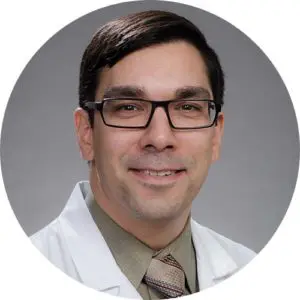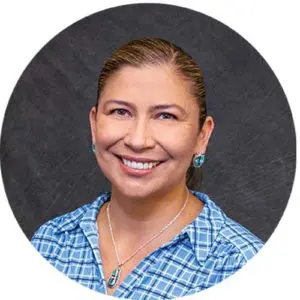Community is key to success
Alumna Elizabeth TopSky, MD ’03, a member of the Chippewa Cree Tribe of the Rocky Boy’s Reservation in Montana and a descendant of the Yakama Nation, knew she was looking for more than just a medical school; she was looking for a community and environment where she could succeed.
“Being a Native American is such a huge part of me. I grew up on the reservation, participating in all of the cultural activities. When I was looking at medical schools, I didn’t want to go to a school that didn’t have Native American students as part of the group. I only applied to schools that had Native American Centers of Excellence,” says TopSky. “Maybe I thought I couldn’t succeed without that type of program available.”
Deen understands the feeling. As a descendent of the Blackfeet Nation and the first person in his family to attend college, he’s aware of the unique challenges Indigenous medical school students face. They often don’t have other doctors in their families and are far from their support systems, which can feel isolating, leading to depression and delaying or preventing graduation.
That’s why Deen emphasizes building and fostering strong relationships among students, faculty and other community members as integral to the Indian Health Pathway. “What many Native medical students need is intense mentorship along the way to help them figure out their career path. It always helps to have another Indigenous person who maybe came through a similar pathway and who can help them through school,” he says.
TopSky has made lifelong friends from her time in medical school, but she recalls that first year was lonely. “Medical school was one of the hardest things I went through in my life, but I got the support I needed to get through it,” she says. Today, TopSky works as family care physician at the Tulalip Health Clinic where she completed her preceptorship during her second year of school.
A program with depth and breadth
Anna May, a fourth-year UW School of Medicine student who is Laguna Pueblo and Navajo, grew up in Maple Valley, Wash. Because she grew up without knowledge of her language or traditions as a result of historical trauma, she wasn’t always sure where she fit in. But she always knew that she wanted to be a doctor. And when she discovered the Indian Health Pathway program, she knew she wanted to be a part of it.



